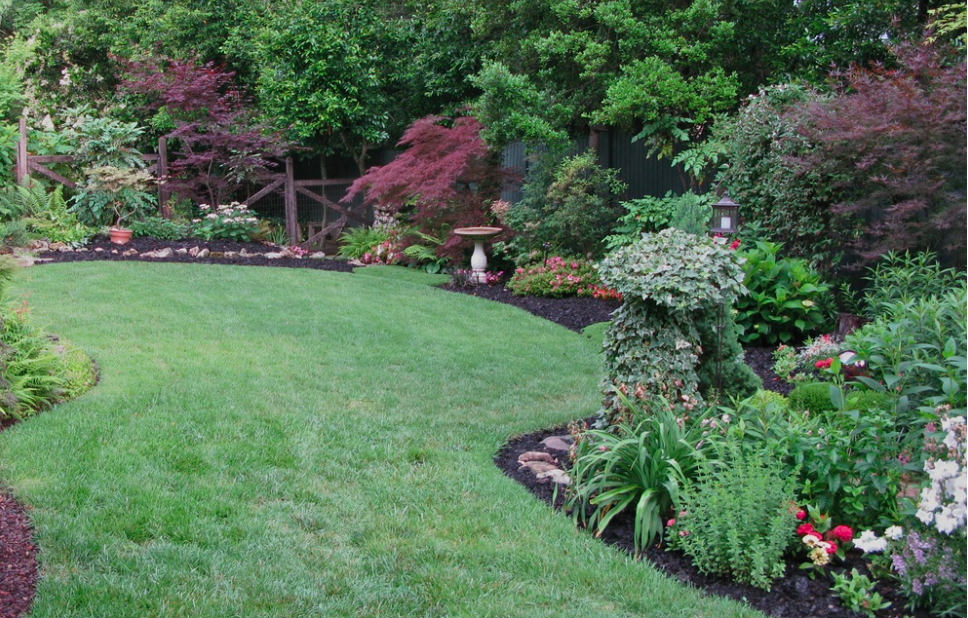Too Much of a Good Thing
Like us, plants need certain nutrients to grow healthy and strong. Sometimes there’s a nutrient deficiency in the soil that can be corrected by applying a fertilizer. When using any fertilizer, it’s important to follow the directions about where, when, and how much to apply. In the case of fertilizer, more is not better – in fact, too much is bad for the health of your plants. Not only that, when used in excess or improperly, fertilizer not taken up by plants can be carried by stormwater into rivers, lakes and bays, leading to a host of problems.
Also, know the law. New Jersey now has strict laws regarding the timing and type of fertilizers that can be applied to lawn areas.
How Too Much Fertilizer Can Harm Plants
- Excessive amounts of one or two nutrients can create an imbalance in the soil, making other important nutrients less available to plants.
- Over-fertilizing can cause a build-up of harmful salts in the soil.
- Too much fertilizer, especially nitrogen, encourages rapid spikes in vegetative growth, which can stress a plant when the slower-growing roots are not able to keep up with the new growth’s water and nutrient needs.
- Insect pests like aphids are attracted to the new growth and can quickly multiply on over-fertilized plants.
- Plants under stress from any of the above become more susceptible to damaging plant diseases.

Tips to Growing Healthier Plants with Less Fertilizer
Don’t guess – get a soil test! The soil test results will tell you what, if any, nutrients you need and how much to apply.
Use slow-release fertilizers when correcting any nutrient deficiencies. Slow-release fertilizers have the advantage of delivering a steady supply of nutrients over a long period of time. Slow-release nitrogen provides for more even growth, lowers the risk of fertilizer “burn,” and lessens runoff and leaching of fertilizer into surface and ground water.
Apply organic fertilizers. They are naturally slow-release and build soil as they feed plants. Examples are dehydrated organic cow-manure pellets, bone meal, fish emulsion, and kelp meal.
Add compost. Compost is the ultimate organic fertilizer and soil conditioner! It slowly releases nutrients to plants while at the same time improving soil structure and moisture retention. Compost can be used as top dressing or mixed into the soil before planting. Learn more about composting.
Use organic mulch. Besides suppressing weeds and conserving water, organic mulch adds nutrients and organic matter to the soil as it decomposes. Examples of organic mulch are compost, shredded leaves, straw, bark, and pine needles.
Grow “green manure.” Cover crops planted on bare soil, such as on vegetable gardens at the end of the growing season, help prevent erosion, suppress weeds, and aerate the soil. When tilled in, they add organic matter and nitrogen to the soil. Learn more about cover crops and green manure.
Water wisely. Overwatering can wash nutrients away or leach them below the roots, wasting money and polluting our water. Learn more about watering wisely.
Plant native species. Well-adapted to local soil conditions, native plants will thrive with minimal fertilization. There is a native for every spot in your yard.
Use low-maintenance grass species. Tall fescues and fine fescues need less nitrogen (and water) than Kentucky bluegrass and perennial ryegrass species.
Know when to fertilize. New Jersey State law prohibits homeowners from applying fertilizers to lawns between November 15 and March 1 when soil temperatures are low and grasses are dormant. Fertilizers should only be applied when grass is actively growing. In New Jersey, the best time to apply nitrogen to lawns is in the late summer or early fall. Avoid applying nitrogen during the hot summer months, when our cool-season grass species slow down growth in response to higher temperatures and drier soil.
Use a mulching mower and leave the grass clippings. The finely shredded grass clippings left behind by a mulching mower function as a lawn fertilizer. Grass clippings can provide as much as one-half of the nitrogen required for a healthy lawn.
Cut back on lawn size. The quickest way to reduce reliance on lawn chemicals is to reduce the size of your lawn. Turf grass demands more nitrogen and general maintenance than most other landscape plant choices. Replacing it with trees, shrubs, flower beds, groundcovers, and other mixed plantings will reduce the need for fertilizer.
